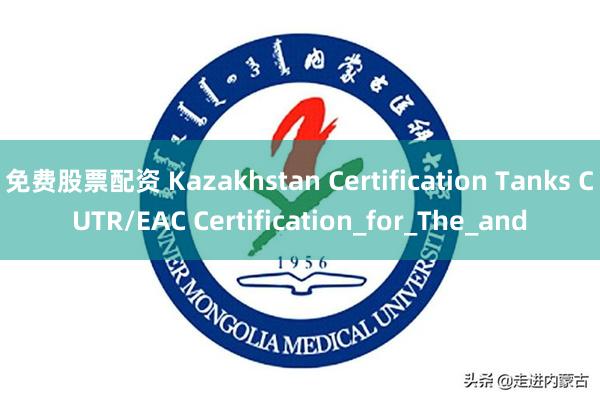
Kazakhstan Certification for Cryogenic Storage Tanks CUTR/EAC Certification免费股票配资
The following is a detailed explanation of the requirements and procedures for CUTR/EAC certification of cryogenic storage tanks in Kazakhstan and the Eurasian Economic Union (EAEU), incorporating relevant technical regulations, testing standards, and certification processes:
I. Applicable Technical Regulations and Standards
Core Regulations
TR CU 032/2013: Technical Regulations on the Safety of Pressure Equipment (primarily applicable to cryogenic storage tanks, covering design, materials, manufacturing, and testing requirements).
展开剩余85%TR CU 010/2011: Safety Regulations for Mechanical Equipment (supplementing requirements for the structural safety of mechanical equipment).
EN 14620 & API Std 620/625: International standards referenced for tank design (e.g., prestressing, material low-temperature resistance, etc.).
Special Requirements
Material Performance: It must be demonstrated that materials maintain mechanical strength and resistance to brittle fracture at ultra-low temperatures (e.g., -196°C).
Load Testing: The tank's ability to withstand a combination of permanent loads (self-weight, pressure) and variable loads (thermal stress, climatic loads, seismic effects) must be verified.
II. Certification Types and Validity Periods
EAC Certificate of Conformity (COC)
Applicable Scenarios: High-risk equipment (e.g., pressure vessels, large storage tanks).
Validity Period: 1 year (single batch), 3 years, or 5 years (series production).
Requirements:
Factory audit (on-site or via video);
Laboratory sample testing (sealing integrity, low-temperature strength, etc.).
EAC Declaration of Conformity (DOC)
Application Scenarios: Low-risk equipment or specific components (e.g., valves, safety devices).
Validity Period: Up to 5 years, no factory audit required, but a third-party test report is needed.
III. Certification Process
Step 1: Application and Document Preparation
Submit the application form, technical passport, and design drawings (in Russian/Kazakh).
Provide supporting documents (e.g., weld inspection reports, ISO 9001 certificate).
Step 2: Product Testing
Laboratory testing: low-temperature sealing, burst pressure, fatigue testing (must be conducted by an EAEU-accredited laboratory) .
Sampling requirements: 3% of the batch or prototype.
Step 3: Factory Audit (COC required)
Verify production consistency and QMS (e.g., welding process control).
Step 4: Certificate Registration and Marking
The certificate is registered in the EAEU Unified Register, and the product must be affixed with the EAC mark.
4. Key Document Checklist
Technical Documents: Design drawings, operating manual (in Russian), risk analysis report.
Test Reports: Low-temperature performance, pressure testing (in compliance with TR CU 032/2013).
Company Qualifications: Business license (notarised in Russian), Authorised Representative Agreement (non-EAEU companies must appoint a local agent).
5. Important Notes
Annual Supervision: COCs with a 3/5-year validity period must undergo annual factory inspections.
Localisation Requirements: Documents must be translated into Russian/Kazakh, and testing must be conducted at an EAEU laboratory.
Exemption Cases: If the storage tank is solely for non-industrial use (e.g., research), EAC certification may be exempted, but Kazakh GOST-K certification must be applied for.
6. Recommended Strategies
Plan Ahead: The certification process typically takes 4–6 months (COC), so it is advisable to initiate the process in advance.
Cost Control: Selecting a certification body in Kazakhstan or Kyrgyzstan can reduce costs by approximately 15–20%.
If specific laboratory or agent recommendations are required,
Certification Body: Shanghai Jinghe Industrial Equipment Testing Co.免费股票配资, Ltd. (上海经合工业)
发布于:上海市